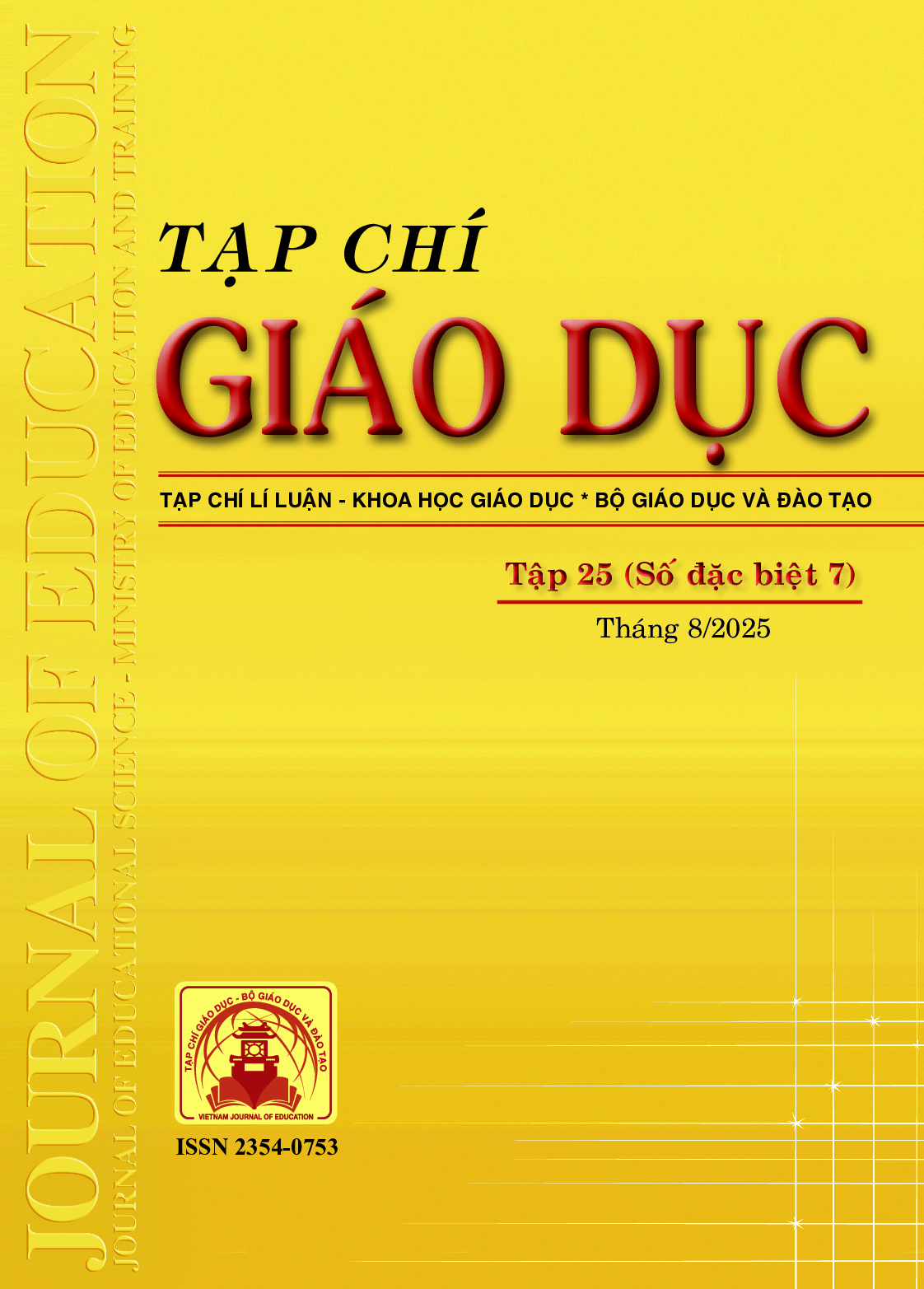Đề xuất mô hình dạy học gắn với khu bảo tồn thiên nhiên trong dạy học phần “Sinh thái học và môi trường” - Sinh học 12
Tóm tắt
The 2018 General Education Program in Vietnam emphasizes the role of real-life experiences in developing students' competencies and qualities. In teaching the topic of Ecology and Environment in Grade 12 Biology, nature reserves (NRs) serve as a distinctive educational context, offering systematic ecological knowledge and authentic experiential learning. This paper proposes a teaching model that integrates NRs into instruction, consisting of three key components: input (context, content), operational mechanism (interactions between teachers, students, and NRs following the learning progression of scientific inquiry competence), and output (scientific inquiry competence, love for nature, and environmental responsibility). The model features a logical structure, high adaptability, and serves as a pedagogical guide for teachers to organize effective nature-based instruction, thereby contributing to the renewal of science education and the promotion of education for sustainable development.
Tài liệu tham khảo
Deci, E. L., & Ryan, R. M. (1985). Intrinsic motivation and self-determination in human behavior. New York: Plenum.
Dillon, J., Rickinson, M., Teamey, K., Morris, M., Choi, M. Y., Sanders, D., & Benefield, P. (2006). The value of outdoor learning: Evidence from research in the UK and elsewhere. School Science Review, 87(320), 107-111.
Dudley, N. (Ed.). (2008). Guidelines for applying protected area management categories. Gland, Switzerland: IUCN.
Gilbert, J. K. (2006). On the nature of “context” in chemical education. International Journal of Science Education, 28(9), 957-976.
Harrington, M. C. R. (2011). Empirical evidence of priming, transfer, reinforcement, and learning in the real and virtual trillium trails. IEEE Transactions on Learning Technologies, 4(2), 175-186.
Hoàng Phê (chủ biên, 2003). Từ điển tiếng Việt. NXB Đà Nẵng & Trung tâm Từ điển học.
IUCN. (2013). Protected areas governance and management. International Union for Conservation of Nature.
Jordan, C., & Chawla, L. (2022). A coordinated research agenda for nature-based learning. In C. Cutter-Mackenzie-Knowles, A. Malone, & E. Barrable (Eds.), Research handbook on childhoodnature: Assemblages of childhood and nature research (pp. 21-44). Springer.
Joyce, B., Weil, M., & Calhoun, E. (2008). Models of teaching (8th ed.). Pearson Education.
King, D. T., & Ritchie, S. M. (2013). Academic Success in Context-Based Chemistry: Demonstrating fluid transitions between concepts and context. International Journal of Science Education, 35(7), 1159-1182.
Klingenberg, K. (2013). Primärerfahrung with living animals in contrast to educational videos: a comparative intervention study. Journal of Biological Education, 48(2), 105-112.
Kleinhenz, P. N., & Parker, M. S. (2017). Video as a tool to increase understanding and support for the Endangered Species Act. Applied Environmental Education and Communication, 16(1), 41-55.
Kuo, M., Barnes, M., & Jordan, C. (2019). Do experiences with nature promote learning? Converging evidence of a cause-and-effect relationship. Frontiers in Psychology, 10, 305.
Louv, R. (2008). Last child in the woods: Saving our children from nature-deficit disorder. Algonquin Books.
Lu, Y., & Zhou, X. (2023). The application of multicluster structural model in English teaching model innovation and effect analysis. Applied Mathematics and Nonlinear Sciences, 9(1).
Soni, J. C., Sankar, C. S., & Riba, M. (2023). Educational technology (MAEDN-501), MA Education, 3rd Semester. Rajiv Gandhi University, Department of Education.
Taylor, I. M., Ntoumanis, N., Standage, M., & Spray, C. M. (2014). A self-determination theory approach to predicting school achievement over time: The unique role of intrinsic motivation. Journal of Educational Psychology, 106(1), 342-358.
Yiğit Gençten, V., Aydemir, F., & Gültekin, M. (2022). Nature-based learning and digital competencies in early years education. Sosyal Bilimler Enstitüsü Dergisi, 12(4), 2160-2176.
Đã Xuất bản
Cách trích dẫn
Số
Chuyên mục
Giấy phép

Tác phẩm này được cấp phép theo Ghi nhận tác giả của Creative Commons Giấy phép quốc tế 4.0 .












